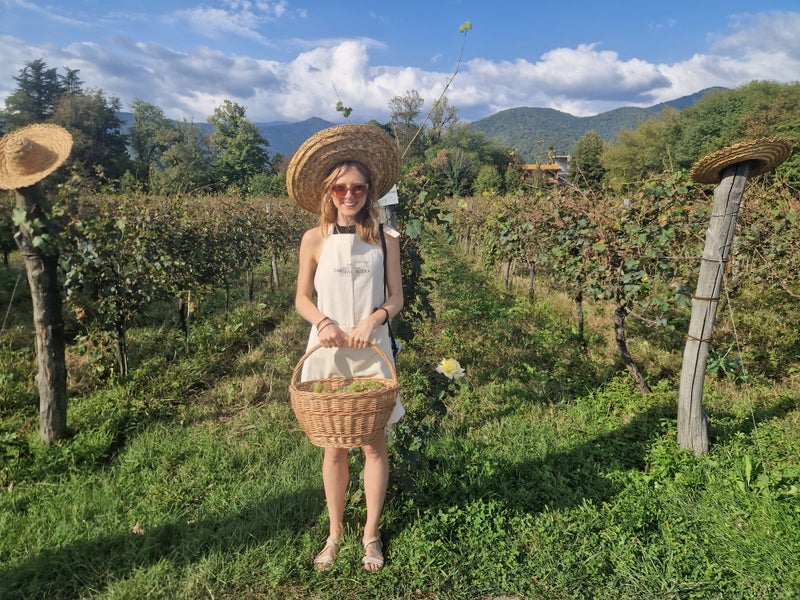South Africa may be best known for its pinotage, but modern production now has a focus on sustainability and centres around French grape varieties. The Guardian’s journalism is independent. We will earn a commission if you buy something through an affiliate link. Learn more. Call me weird, but I often ask random people about their opinions on wine. Not in an annoying mini-mic-on-the-high-street kind of way, but, rather, I ask everyone from taxi drivers and hairdressers to fellow drinks enthusiasts about what they’re drinking. I recently asked a shop manager what he thought of South African wine, and he responded by throwing his hands in the air and exclaiming: “Eurgh! I can’t stand pinotage!”.
![[Hannah Crosbie]](https://i.guim.co.uk/img/uploads/2024/12/18/Hannah_Crosbie.png?width=75&dpr=1&s=none&crop=none)
This cross between pinot noir and cinsault was developed in South Africa, and it’s the country’s signature grape variety, but its reputation for conjuring notes of burnt rubber and paint has, I fear, tarnished the rest of the country’s wine output. Which is a crying shame, considering how much else there is to be delighted by. I recently spent some time in and around Cape Town, where the first vines were planted in 1655 by the colonising Dutch East India Company. It’s a region that you’d think would be solely defined by the strong African sun, but my visit at the hottest time of the year was marked by a strong southeasterly wind that was channelled through the vineyards by the mountain range that frames the city. Nicknamed the Cape Doctor, it cools and provides freshness, and also blows away pests and diseases.
Despite these excellent conditions for ripening grapes while retaining freshness, the area (and South Africa as a whole) got into its wine stride only in the past few decades. Problems with overproduction in the early 20th century were exacerbated by the subsequent boycotts and sanctions of the 1960s, in protest against the apartheid regime. When those were lifted in the 1990s, there was a larger focus on smaller production, higher quality, and both ecological and social sustainability (it is now common for larger wineries to support one or more social initiatives in the surrounding areas).
While pinotage is still made in South Africa (it dips in and out of fashion), most of the nation’s production these days focuses on French grape varieties. Cabernet sauvignon is the most widely planted red wine grape, chenin blanc the white, and they range from the dry and simple or complex and layered, to succulent and sweet. There is also méthode cap classique (MCC), a local sparkling wine made in the champagne method, but significantly cheaper. Graham Beck makes the best-known MCC in the UK market, and for good reason, not least because it’s staunchly reliable.
The country’s wine industry is only just getting back on its feet after South Africa’s incredibly challenging Covid restrictions that saw it ban all alcohol sales and exports, so the easiest thing we can do to support them is to buy their wine. A Fistful of Schist Chenin Blanc 2024 £7.95 The Wine Society, 12.5%. From a Swartland-based cooperative, a pleasingly complex chenin, for the price, backed up by crispness.
Klein Constantia Sauvignon Blanc £15.99 (or £13.99 on mix six) Majestic 13.5%. Not your typical savvy b. This is moreish, peachy and textured. Journey’s End Family Reserve Cabernet Sauvignon £12 Tesco, 14%. Easy, pleasant cabernet sauvignon with ripe dark berries, plums and a backbone of oak spice. M’hudi Family Boutique Barrel Fermented Chenin Blanc 2021 £22.49 MJ Wine Cellars, 14%. Broad on the palate, spicy and rich, with orchard fruit notes. A winner on the 2023 Drink Business’ chenin blanc masters awards.































